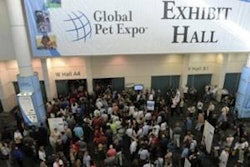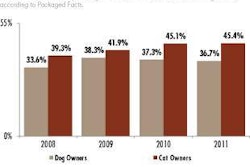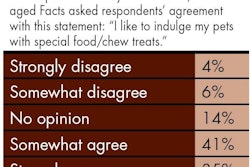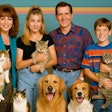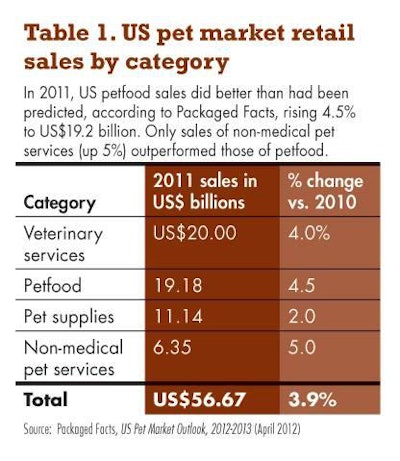
Although the US pet industry performed slightly better overall in 2011 than it did in 2010, the market remains crunched by consumer cutbacks stemming from the slow economic recovery. During 2010, total US sales of pet products and services rose 3.5%, and sales were up 3.9% in 2011. Growth in the health-focused veterinary category was slower than expected in 2011, putting a drag on the market overall, and sales of non-food pet supplies were weak (up 2.0% to US$11.1 billion).
On the other hand, petfood did better than had been predicted, rising 4.5% to US$19.2 billion (an US$830 million gain), making petfood a close second to veterinary, whose sales rose 4% to $US20 billion. Only sales of non-medical pet services (up 5% to US$6.4 billion) outperformed those of petfood (Table 1).
Petfood’s solid performance was not uniform across all channels, with sales rising just 1.8% in the mass channels tracked by SymphonyIRI (supermarkets, drugstores and mass merchandisers excluding Walmart). The saving grace was the pet specialty channel, where petfood sales have been growing at a much faster clip.
According to GfK Retail & Technology, which collects sales information from a sample of pet shops, farm and feed stores and veterinary clinics across the US, pet specialty retail sales of petfood rose 7% in 2011, following 8.5% growth in 2010 and 12% growth in 2009 (Table 2). Excepting a 1% decline in 2010, unit sales have also been good, up 5% in 2009 and 6% in 2011, while volume (pound) sales have progressed by 1%–2% annually.
In its reports, GfK segments pet specialty sales according to channel, with the 2011 figure breaking out into pet shops/pet retail at 68% of sales, veterinary clinics at 16% and farm and feed stores also at 16% (Table 3). For the past two years, pet shops/pet retail have posted considerably faster rates of dollar growth than the other two channels, while dollar growth across all channels was fairly even in 2009, in the 11%–13% range. From 2008 to 2011, pet shops/pet retail increased their share of dollar sales by 5 percentage points due to the channel’s faster overall growth.
Based on the numbers, within the pet specialty universe, the veterinary and farm and feed channels have suffered more from post-recession sluggishness than pet shops/pet retail have. Although both the veterinary and farm and feed channels did well in 2009, with dollar sales gains in the double digits, sales weakened considerably in 2010 and 2011, while pet shops/pet retail maintained percentage growth in the low double digits. Pet shops/pet retail annual growth was slower in 2011 than 2010, however, while the other two channels charted improvement.
Looking ahead, Packaged Facts predicts continued strength for pet shops/pet retail, as well as a solid rebound in both the veterinary and farm and feed channels, with the latter two channels especially benefiting from ongoing economic recovery and the introduction of channel-specific petfoods backed by intensified marketing.

